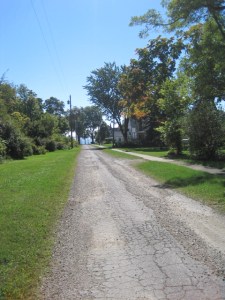If you take children to a Natural History Museum, will they:
- ask thoughtful questions about the difference between igneous and sedimentary rocks
- admire the diorama of a bison family
- stampede toward the dinosaurs, prehistoric sharks, and other creatures with teeth the size of bananas?
You know the answer.
Should the museum have a case of trilobite fossils, it will be forlorn and dusty. Poor trilobites. Those homely little guys resembled a cross between a roach and an armored car, skulked around the ancient sea, and curled into a terrified ball whenever a predator neared.
And yet! These fellows dominated the oceans for a quarter of a billion years, surviving far longer than dinosaurs. They went along for the ride with Continental Drift, and their fossils have been found everywhere from Canada to China to Bolivia to Australia. Those fossils have allowed scientists to formulate new theories on speciation (how new species develop) and–what especially interests me–how creatures first developed sight.
But do they get the respect they deserve? Like most humble heroes, who exist everywhere, the answer is no. I’m hoping my new novel, “Moonpenny Island”, will change that, at least a little.
There’s a real Lake Erie island, a short ferry ride away, that I’ve visited for years. It’s mostly limestone, perfect for growing lilacs and finding fossils. People like me go there to indulge the delicious fantasy of leaving the world behind. There’s a rocky back shore, an abandoned quarry, a single store, a K-12 school with maybe twenty students. Every time I leave the place, I feel a pang. What would it be like to stay, to be a sturdy, self-sufficient year-rounder? I asked myself the question so many times, I finally had to write a book to find out.
I shrank my island, and pushed it further out into the lake. “Moonpenny” begins just as winter clamps down. The ferries stop running. Fewer than 200 creatures, and that includes Flossie the gangster cat and crazy Violet’s three-legged dog, live there then. Perfect setting for a mystery, I was sure. The real island is a stopping-off place for migrating birds, and in my first drafts the scientist who arrived to do research was an ornithologist. Because so much of the novel is about staying or leaving, this seemed like a brilliant idea.
But then I went to visit again, this time in early March. It was bitter cold, the wind on the open ferocious. The line between lake and air was so fine it was almost non-existent. As I trudged around, head down, I couldn’t think any thought bigger than, Wind. Water. Rock. That’s when I knew–my scientist had to be a geologist/paleontologist.
Growing up on the island, my main character didn’t view fossils as a big deal–like every island kid, she had a shoe-box-ful under her bed. It wasn’t till that geologist showed up that she started to reconsider the ground beneath her own two feet. At this point, I was still trying to write a mystery, though my doubts were as deep as the quarry swim hole. I dreamed up one goofy crime after another. I either made the bad guy way too obvious or ridiculously improbable. It turns out that, just as loving to eat gourmet cuisine doesn’t make you a chef, adoring mysteries doesn’t make you able to write one. On and on I bungled, one miserable draft after another.
It was the trilobites who saved me. They almost literally opened my eyes. While doing research on fossils of Ohio, I stumbled on the magnificent “Trilobite! Eyewitness to History”, by Richard Fortey, an exuberant cheerleader for the little bugs. Besides all the impressive facts already mentioned, I discovered that trilobites were among the very first critters to see. Because their fossil record is so abundant, and because their eyes were formed from durable calcite, scientists have been able to trace this evolution in a way that’s rare and incredibly valuable.
What struck me–what strikes my hero Flor–is the idea that sight was not always a given. Not only that. Some trilobites who developed sight evolved to lose it again. That got me wondering about how I’d assumed that evolution always goes in the direction of biggest, fastest, strongest, and how wrong I was. It got me thinking about how, throughout our lives, we continue learning how to see, and how maybe the real, ultimate trick is being able to see through another person’s eyes. (By the way, isn’t that also what reading lets us do?) And at last I came to realize that here, in the natural order of things, in the act of changing and growing, lay mystery enough.
To win a signed copy of “Moonpenny Island”, please leave a comment below. And next time you go to the Natural History Museum, please visit the lonely, gallant trilobites!
****
“Moonpenny Island”, publishing on February 10 with HarperCollins, is a Junior Library Guild selection and has received starred reviews from Kirkus and Publishers Weekly. Tricia is also the author of “Cody and the Fountain of Happiness”, first book in a new series for younger middle grade readers, publishing this April with Candlewick.










